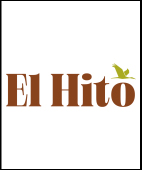
LIFE Project: Restoration and expansion of "El Hito", a priority salt flat and wetland (Spain)
- Type Project
- Status Filled
- Execution 2021 -2024
- Assigned Budget 3.108.400,00 €
- Scope Europeo
- Autonomous community Castilla y León
- Main source of financing LIFE
- Project website Web del proyecto
The LIFE EL HITO project aims to halt the decline, restore, and increase the area of priority habitats under the EU Habitats Directive, such as coastal lagoons (1150*), the Limonietalia salt marshes (1510*), and Mediterranean wetlands and temporary pools (3170*) in central Spain, and to protect priority species designated by the EU Habitats and Birds Directives. The project also aims to restore bird habitats listed in Annex I of the Birds Directive.
The project targets the El Hito wetland, a Natura 2000 site, which is subject to agri-environmental schemes designed to conserve steppe birds, such as cranes (Grus grus), by offsetting lost income and adopting new production methods compatible with environmental protection. Methods focused on the conservation of steppe birds include the use of untreated seeds, late harvesting, nest protection, and specific crop rotations.
The measures require the creation of application units of approximately 1,000 ha, but the agricultural area at this site is only slightly over 300 ha. Until the next agri-environment measure for the site is implemented in 2023 under the new CAP, this project will implement compensation measures and study the real costs of future measures and commitments, laying the groundwork for long-term collaboration with local farmers through land stewardship agreements and the marketing of products based on biodiversity criteria. The compensation measures will not overlap with measures funded through the Rural Development Programme.
- Restore endangered flora and buffer zones around the wetland and surrounding steppe salt marshes.
- Close trails and drains that impact the wetland to ensure temporary flooding and eliminate elements that disrupt the natural flood cycle.
- Remove debris and infrastructure (e.g., fences, power lines) that impact the lagoon.
- Create buffer zones to prevent sediment from filling this shallow wetland and prevent diffuse pollution from surrounding agricultural lands.
- Establish land stewardship agreements and agro-environmental programs that allow for the implementation of long-term sustainable management plans.
- Improve national and regional wetland strategic plans and the National and Regional Catalogues of Threatened Species.
Raise awareness among local populations about the problems affecting the wetland and the benefits of restoring the habitat through traditional management. - To educate a wider audience about coastal wetlands and promote sustainable tourism and agricultural products.
- Acquisition of more than 500 hectares of land, including 467 hectares to conserve priority wetlands and salt marshes and 34 hectares of agricultural land to convert into priority habitats.
- Demolition and removal of old warehouses and other buildings in key areas; removal of 7.5 km of fences dividing the wetland, 3,000 m3 of infrastructure, and debris and waste accumulated in the lagoon and buffer zones.
- The closure and renaturalization of small drainage channels, the elimination of 3 km of illegal roads, and the restoration of springs are all contributing to the filling of the wetland.
- The restoration and enhancement of habitats covered by the Habitats Directive (*1510 and *3170), as well as other wetland and salt marsh habitats.
- Seed harvesting, production and planting of more than 250,000 seedlings of different endemic Limonium species, to ensure habitat expansion to 1510*.
- Implementation of 15 land stewardship agreements on 200 ha of agricultural land, reduction of conflicts caused by cranes ( Grus grus ) and sustainable agriculture in favor of Falco naumanni , Otis tarda , Tetrax tetrax and Chersophilus duponti .
- Construction of a small green filter near the El Hito water treatment plant to improve the quality of the water that occasionally reaches the wetland.
- Marking of 10 km of power lines to prevent collisions with certain bird species.
- Construction of two shelters for bird watching, mainly cranes, to attract ecotourism.
- Updated vegetation mapping in relation to the evolution of selected habitats. In situ and laboratory monitoring and surveillance.
- Entomological studies as the best key indicators for these habitats and a bird census.
- Ecosystem service indicators defined.
- Awareness-raising program for 30 municipalities and 50 schools, and dissemination of information through audiovisual material, including national television (RTVE).
- Networking through participation in conferences, wetland habitat working groups, and the development of strategic plans for wetland conservation.
- Greater knowledge about these rare habitats, shared with working groups in Europe, informs the assessment of their conservation status (EIONET).
- Coordinator/entity name: Eduardo de Miguel Beascoechea
Postal address: Corro del Postigo, 1, 34337, Fuentes de Nava,
The project contributes to the implementation of the EU Habitats Directive, the Birds Directive, the Pollinator Initiative, the 2030 Biodiversity Strategy, the Common Agricultural Policy (CAP), and the EU Action Plans for the little bustard, the great bustard, and the lesser kestrel. It is also in line with the Natural Environment Conservation Plan of Castilla-La Mancha and State Law 22/2015 on Natural Heritage and Biodiversity and the Regional Catalogue of Threatened Species.
- Fundación Global Nature







